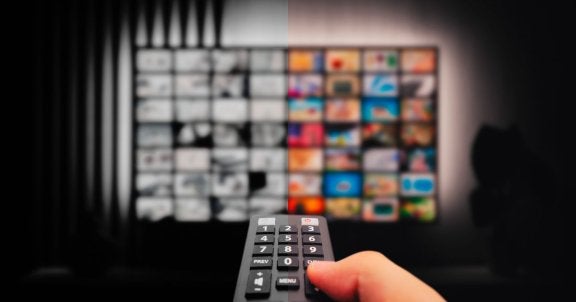Color TV Day: When and Where was the TV Invented And How Did It Evolve

Television has transformed from a novelty into a central part of everyday life. What once showed up as grainy black-and-white images on bulky screens has now become a sleek, streaming-friendly entertainment hub in most homes. While we use it today for everything from binge-watching shows to gaming and even video calls, the TV had a far more experimental start.
In celebration of Color TV Day (June 25), let’s look at the story of how television got its start, evolved over the decades, and became what it is now.
When and Where Was the TV Invented?
Television wasn't born in one moment or in one place. Instead, it emerged through multiple innovations throughout the 1920s. Engineers and inventors in the United Kingdom, United States, Germany, and other countries were all working toward the same idea.
In 1926, Scottish inventor John Logie Baird gave the first public demonstration of a working television system in London. His version relied on mechanical spinning disks to scan and transmit images. At the same time in the U.S., Philo Farnsworth, a teenage farm boy turned engineer from San Francisco, was developing a competing system that used electronic components rather than mechanical ones. These two paths, mechanical versus electronic, marked the start of a race that would eventually lead to the modern television.
Who Invented Television?
Ask who invented television and you'll get a few different names, but the two listed above stand out: John Logie Baird and Philo Farnsworth. Baird’s early system, though groundbreaking, was limited. It used moving parts and produced low-quality, flickering images, but it proved the idea could work.
Farnsworth, just one year later in 1927, introduced something entirely new. His approach was fully electronic and didn’t rely on any mechanical movement. He developed a device called the image dissector, which could convert moving images into electronic signals. Farnsworth’s system became the foundation for modern television, earning him credit as one of its true inventors and helping shift TV from experimental tech to mass-market reality.
When Did Color TV Come Out?
While most people think of the 1950s as the golden age of TV, color broadcasting didn’t officially launch in the U.S. until 1953. The following year, the 1954 Tournament of Roses Parade became the first major live event aired in color, which amazed audiences. For the first time, viewers could see vibrant red roses and bright marching band uniforms right in their living rooms.
Even so, color television was a slow starter. Sets were expensive, and most shows were still filmed in black and white. It wasn’t until the mid-1960s, when prices dropped and more programming went colorful, that households began making the switch in large numbers. Eventually, color TV became the standard, and black-and-white sets faded into nostalgia.
What Was the First Movie Ever Made?
TV and movies have always shared a connection, so it’s natural to ask: what was the first movie ever made? The answer goes all the way back to 1888, with a two-second clip called the Roundhay Garden Scene, filmed in Leeds, England. It shows four people walking briefly through a garden, nothing flashy, but groundbreaking at the time.
This moment is often seen as the birth of motion pictures. This short clip kicked off more than a century of cinematic storytelling, laying the groundwork for film as both art and entertainment. From that simple garden stroll to today's high-budget blockbusters, movies have become a major part of what we now enjoy on televisions, both through traditional channels and streaming platforms.
Television’s Impact on Entertainment Today
Television didn’t just change how we consume entertainment, it redefined it. Early TV meant watching whatever was scheduled, when it aired. But that gave way to hundreds of cable channels, on-demand programming, and now, streaming libraries that offer entire seasons in just a few clicks.
Today’s TVs aren’t just for watching, they’re digital hubs. Smart TVs connect to the Internet, stream shows in ultra-sharp 4K, run apps like YouTube and Netflix, and even support voice commands or smart home controls. To take full advantage of these features, the connection behind the scenes, your Internet, needs to be fast and reliable.
Why Modern TVs Depend on Strong Internet
Streaming shows, playing games online, and running apps all depend on one thing: a strong Internet connection. These activities use a lot of data and demand consistent speed. That’s where your Internet bandwidth comes into play. The more bandwidth you have, the better your TV can perform.
Without enough speed or signal strength, you might run into common frustrations like videos buffering, picture quality dropping, or apps taking too long to load. If your smart TV is far from the router or dealing with interference from other devices, the performance may suffer. Ideally, smart TVs should be placed in areas with solid WiFi coverage or connected directly with an Ethernet cable for faster, more stable results.
How Buckeye Broadband Supports Modern Streaming and Smart TV Experiences
While the question of when TV was invented brings us back to a century of innovation, the real game-changer today is how well your Internet keeps up with your entertainment. Buckeye Broadband delivers high-speed Internet solutions that are built for the demands of modern television, including 4K streaming, smart TV apps, gaming, and live events.
Whether you're watching sports, catching up on your favorite series, or enjoying movie night with family, our team makes sure your experience is smooth and crystal clear. Explore Buckeye Broadband’s streaming options and find the Internet speed that fits your TV setup so your entertainment is as advanced as the technology behind it.
